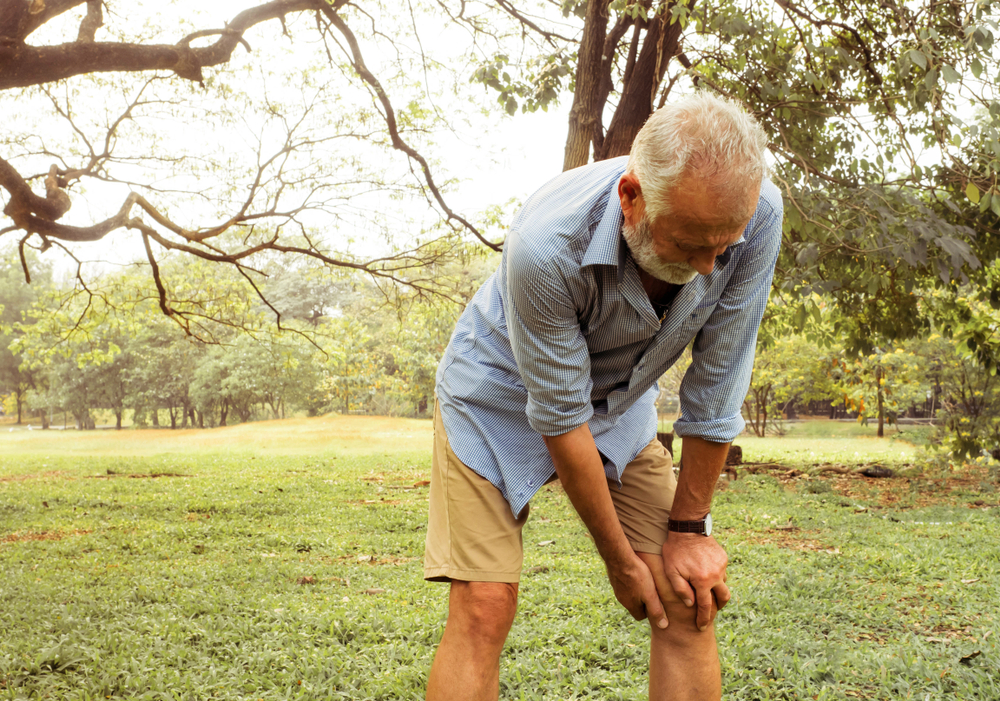Today, pain affects millions of Americans, and knee pain is one of the leading sources of this discomfort. Most people don’t know the source of their knee pain or how to treat the symptoms. In this article, we share insight on the “TOP FIVE” list of knee pain. Fortunately, knee pain is treatable in most cases. Davidson Orthopedics encourages you to seek expert advice, understand your knee pain, and work together to restore an active, pain-free lifestyle.
In this article, Dr. Davidson highlights five of the most common causes of knee pain. These causes range from traumatic injuries to gradual wear and tear. We hope you will find this resource useful in your path back to a pain-free, healthy knee.

If you are currently suffering from knee pain, the first step is to determine what may be causing your pain. Only once we identify the source of pain (diagnosis) can we outline and consider diagnosis-specific solutions, ranging from simple measures such as ice and exercises to surgery, which is often minimally invasive.
#5 Patellofemoral Pain Syndrome
This condition involves pain in the front of the knee, coming from the joint where the patella articulates with the underlying femur. People get this condition both from injury or, more commonly, from malalignment and overuse.
Patellofemoral pain syndrome is usually treated non-surgically with therapy, bracing, and injection therapies as early options. Many patients require surgery to treat this condition, which addresses both the damaged cartilage and any malalignment or instability.
For a more in-depth look at Patellofemoral Syndrome, click here to access our latest article.
#4 Ligament Injury
The knee has ligaments within the joint (ACL and PCL) and sets of ligaments outside and inside (LCL and MCL). The MCL is the most commonly injured. Since the outer ligaments are not within the joint, they are surrounded by healing elements and can often be treated non-surgically. The ACL and PCL are within the knee, meaning they are surrounded by joint fluid and have little capacity for self-healing. Untreated, substantial ligament injury can lead to instability, which can limit activity and lead to arthritis.
#3 Torn Meniscus
Meniscus tears can be either traumatic or degenerative (wear and tear). The pain of a torn meniscus is typically along the side of the knee and can be sharp and catching. Left untreated, some tears can lead to chronic irritation and cartilage wear.
While some meniscus tears may heal on their own, many need surgical treatment. At the time of surgery, the meniscus is trimmed or repaired, depending on the individual circumstance.
#2 Osteoarthritis
This condition is common amongst patients over 50 years of age or in individuals that have suffered knee trauma. Osteoarthritis can involve the entire knee or just individual sections. The cause is usually related to a combination of congenital predisposition and “wear and tear.” Early diagnosis and active management are essential with this condition as Osteoarthritis is typically progressive and worsens over time. Patients dealing with Osteoarthritis often feel aching pain, which can be occasionally sharp.
Treatment of Osteoarthritis is typically conducted as a sequential plan. Early measures include exercise, weight loss, oral medications, and therapy. Bracing and injection therapies can be helpful in many cases. Total and Partial knee replacement or resurfacing is often necessary when conservative measures fail to provide relief.
#1 Tendinitis
Tendon inflammation and the associated pain are arguably the most common cause of knee pain. There are many tendons attaching around the knee that can each suffer from acute or chronic inflammation. The most common being the patellar tendon. This pain has been called “jumper’s knee,” and other names to describe the marked and typically dull pain just below the patella. Other tendons subject to inflammation and possible pain sources include the quadriceps and hamstrings. Tendinitis is usually the result of overuse, but imbalance and injury can contribute to this pain.
Tendinitis pain is typically treated non surgically. The first stage of treatment often involves therapy and specific stretching and exercise to restore balance and limit overloading of the inflamed tendons. Medications (oral and topical), bracing, and injection therapies are often used to treat this pain. The use of PRP (platelet-rich plasma) has shown a very significant benefit to healing damaged tendons. We are using PRP daily in the clinic to treat tendon pain.
Ultimately, knee pain can come from a variety or combination of conditions. Only once the diagnosis is established can an ideal treatment plan be implemented. Don’t let a painful knee slow you down. The best way to restore your active, pain-free lifestyle is to consult with a knee specialist and get a diagnosis-specific treatment plan. So, what are you waiting for?? Call today for a consultation with Dr. Davidson and his team.
